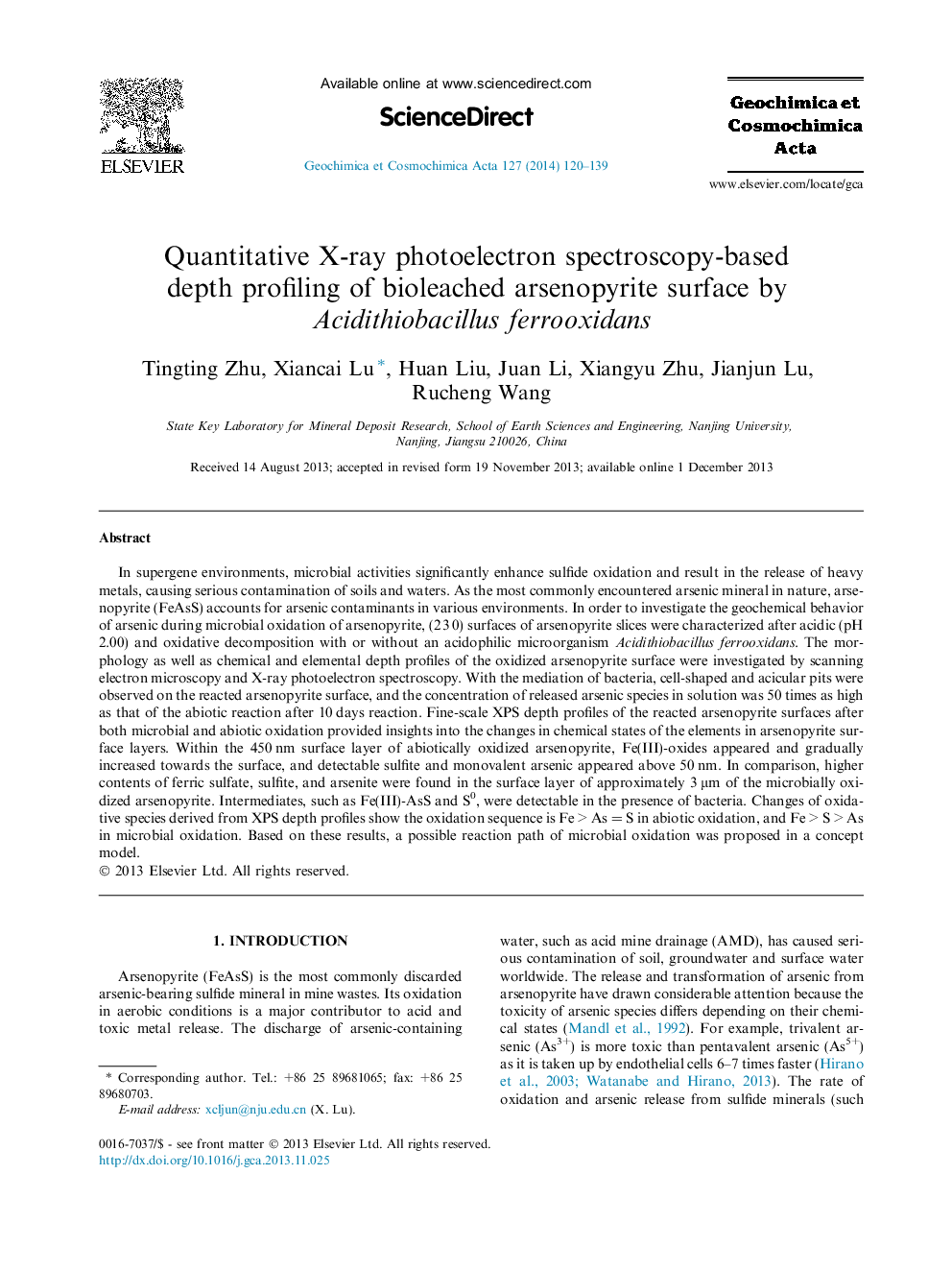| Article ID | Journal | Published Year | Pages | File Type |
|---|---|---|---|---|
| 4702140 | Geochimica et Cosmochimica Acta | 2014 | 20 Pages |
•High resolution X-ray photoelectron spectroscopic depth profiles of biotically and abiotically leached arsenopyrite surface were provided.•The preference for abiotic and biotic oxidation of different elements in arsenopyrite was revealed.•A conceptual model for microbial oxidation of arsenopyrite integrating surface etching and electron transferring in the alternated surface layer was proposed.
In supergene environments, microbial activities significantly enhance sulfide oxidation and result in the release of heavy metals, causing serious contamination of soils and waters. As the most commonly encountered arsenic mineral in nature, arsenopyrite (FeAsS) accounts for arsenic contaminants in various environments. In order to investigate the geochemical behavior of arsenic during microbial oxidation of arsenopyrite, (2 3 0) surfaces of arsenopyrite slices were characterized after acidic (pH 2.00) and oxidative decomposition with or without an acidophilic microorganism Acidithiobacillus ferrooxidans. The morphology as well as chemical and elemental depth profiles of the oxidized arsenopyrite surface were investigated by scanning electron microscopy and X-ray photoelectron spectroscopy. With the mediation of bacteria, cell-shaped and acicular pits were observed on the reacted arsenopyrite surface, and the concentration of released arsenic species in solution was 50 times as high as that of the abiotic reaction after 10 days reaction. Fine-scale XPS depth profiles of the reacted arsenopyrite surfaces after both microbial and abiotic oxidation provided insights into the changes in chemical states of the elements in arsenopyrite surface layers. Within the 450 nm surface layer of abiotically oxidized arsenopyrite, Fe(III)-oxides appeared and gradually increased towards the surface, and detectable sulfite and monovalent arsenic appeared above 50 nm. In comparison, higher contents of ferric sulfate, sulfite, and arsenite were found in the surface layer of approximately 3 μm of the microbially oxidized arsenopyrite. Intermediates, such as Fe(III)-AsS and S0, were detectable in the presence of bacteria. Changes of oxidative species derived from XPS depth profiles show the oxidation sequence is Fe > As = S in abiotic oxidation, and Fe > S > As in microbial oxidation. Based on these results, a possible reaction path of microbial oxidation was proposed in a concept model.
